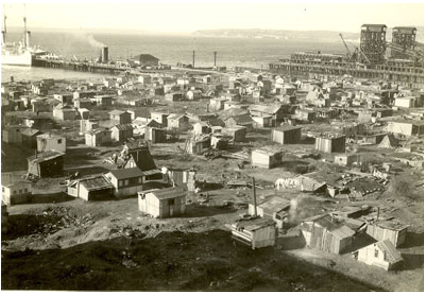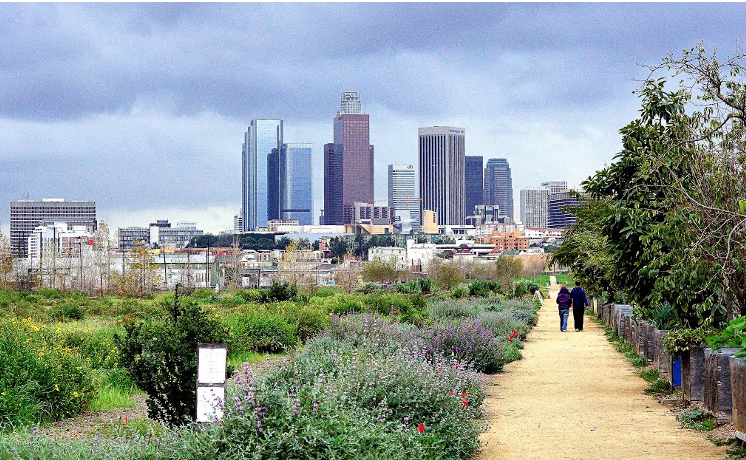CommentsEASTSIDER-This is mostly tongue in cheek. Mostly.
But the truth is, Hoovervilles were a response to a government unable or unwilling to cope with a mass economic dislocation. And the reality is, government in Los Angeles has been sadly remiss in its response to economic dislocation in Los Angeles.
Hooverville
First, for those who never heard of Hooverville, a quick refresh by Wikipedia:
“Homelessness was present before the Great Depression, and was a common sight before 1929. Most large cities built municipal lodging houses for the homeless, but the Depression exponentially increased demand. The homeless clustered in shanty towns close to free soup kitchens. These settlements were often trespassing on private lands, but they were frequently tolerated or ignored out of necessity. The New Deal enacted special relief programs aimed at the homeless under the Federal Transient Service (FTS), which operated from 1933 to 1935.[3]”

And not too far away, the City of Seattle Washington, had one of the larger ones:
“Seattle's main Hooverville was one of the largest, longest-lasting, and best documented in the nation. It stood for ten years, 1931 to 1941.
Covering nine acres of public land, it housed a population of up to 1,200, claimed its own community government including an unofficial mayor, and enjoyed the protection of leftwing groups and sympathetic public officials until the land was needed for shipping facilities on the eve of World War II.”
Hooverville being so old fashioned, and Eric Garcetti being the Mayor in charge as the homeless population explodes with few real solutions, why not have a big one and call it Garcettiville?
The Perfect Site in LA
Most Angelenos are blissfully unaware of the huge land mass between downtown LA and Lincoln Heights generally referred to as the Cornfield. Currently, about 32 acres of the land is a State Historical Park. The balance, over 200 acres, is within LA City’s control.
How the Historic Park itself came about is another “only in LA” story, called Not A Cornfield.
"Not A Cornfield" was a 2005 art project that transformed a 32-acre (130,000 m2) industrial brownfield (today part of Los Angeles State Historic Park in the historic center of Los Angeles) into a cornfield for one agricultural cycle. The project took place north of Chinatown.[1]
Lauren Bon created this work with funds from the Annenberg Foundation and considered the piece to be a sculpture. The installation cost $3 million and took place at the proposed site of Los Angeles State Historic Park, which had been referred to as "The Cornfield", because of the crops growing there prior to its industrial development.[2] Fifteen hundred truckloads of soil were transported to the site and one million seeds were planted”
For those interested, there’s a good historical post by KCET available.
LA City and Its Cornfield Politics
Excluding the 32 acres of the Historic Park, there are somewhere around 200 acres of land that are in one way or another controlled by LA City and its various entities. As you might guess, the politics have been wonderfully down and dirty as special interests fight over the spoils.
I got involved back in the day with an entity called the CRA/LA, and its Eastside Adalente Project area. It had a Board totally controlled by Ed Reyes and later, Jose Huizar, and nary a ripple came to the surface and public attention.
Here’s a summary from a CRA/LA Document:
The proposed 663-acre Cornfield Arroyo Seco Redevelopment Project Area (Proposed Project) is located just northeast of Downtown Los Angeles, bounded by the Chinatown Redevelopment Project Area to the west and Lincoln Heights to the east. The Los Angeles River and Arroyo Seco travel through the Proposed Project and meet near its northern boundary. The historic Arroyo Seco Parkway and Interstate 5 also traverse the Proposed Project. The Proposed Project is served by the Gold Line Light Rail, while the proposed High Speed Rail will probably cut through the area.
The Proposed Project includes industrial and warehouse areas, residential neighborhoods and numerous City facilities. Councilmember Ed P. Reyes requested that the CRA/LA study the Proposed Project area to explore ways to reverse the existing physical and economic decline and identify revitalization strategies.
This was around 2009. Ultimately the CRAs were eliminated statewide by Governor Jerry Brown in 2011. After that, it took a good chunk of time to figure out what to do with the former CRA/LA projects.
Anyhow, the next big move was called the CASP (Cornfield-Arroyo-Seco Plan).
This 100-page monster was so full of jargon that you could barely track the zillion components, which would have allowed the City to pretty much do whatever it wanted. It was completed around 2013, would have cost the equivalent of a significant part of the State Debt. So it sat there for five years.
In 2018, the blog Urbanize Los Angeles gave us an important update.
In 2013, the City of Los Angeles adopted the Cornfield Arroyo Specific Plan (CASP), which governs land use and development in the nearly 660 acres of land which surrounds Los Angeles State Historic Park. At the time of its adoption, it was billed as an innovative approach to creating affordable housing and lauded for dropping parking requirements in new developments.
But five years after the plan was enacted, the CASP has yet to produce a single unit of new housing - market rate or affordable. This is not due to a lack of demand: residential projects that were entitled under pre-2013 zoning regulations are proceeding within the CASP area, and other large developments have been announced on adjacent blocks. The problem seems to instead be an imbalance between policy and market conditions, which Councilmember Gil Cedillo is now looking to address.
Since the date of this article, not much has changed, other than the fact that the green space and trees in the area are maturing, and it’s one of the very few large greenspaces in Los Angeles.
The un-funny part of all this is that the politicians play with each other, touting how there will be all kinds of “affordable” housing and help for the dispossessed. Yet they still haven’t really addressed the problem of homelessness for more than 50,000 people.
So, I have a modest proposal.
Garcettiville
For better or for worse, this has all exploded under the tenure of Mayor Eric Garcetti, so he owns it. How about a Garcettiville on the Cornfield site, with honorable mention to the Los Angeles City Council?
Just sayin’.
(Tony Butka is an Eastside community activist, who has served on a neighborhood council, has a background in government and is a contributor to CityWatch.) Photo: JConnection 2013; King County Archive. Edited for CityWatch by Linda Abrams.
















